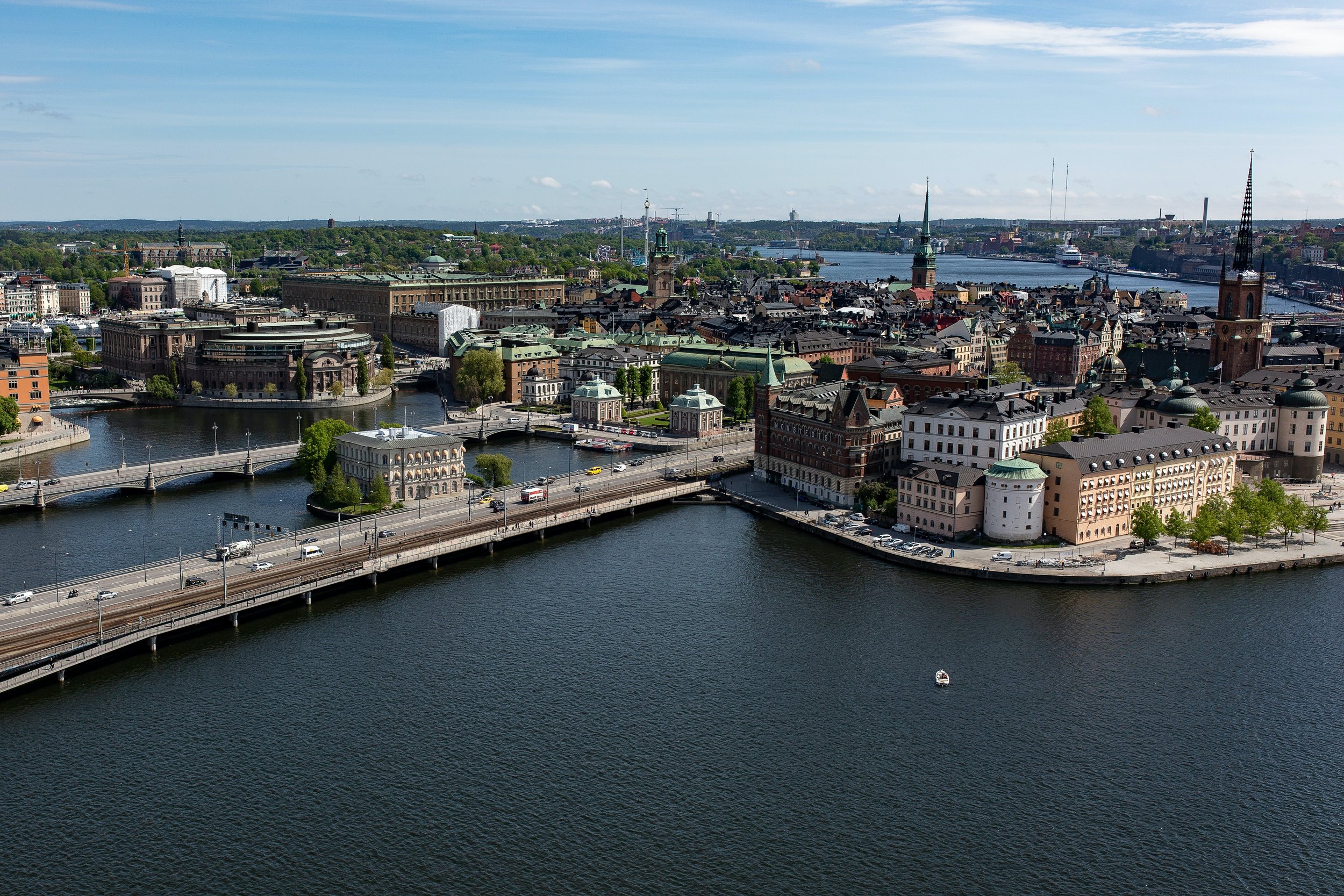Garth Falconer - Report on the 75th IFLA Congress Stockholm and Nairobi
My first visit to Stockholm was full of anticipation after hearing for years about its strategic location up a maze of islands and inlets, and how the Swedish capital makes the most of its coastline.
Stockholm. Photo Credit: Pedro Gandra on Unsplash
The city has a population of around 1.2M, a little smaller than Auckland but less than half the extent due to the proliferation of 6 to 7-level apartment buildings. As far as the ideal is supposed to be these days, a compact and well-functioning city, Stockholm has it all without fuss. It has a complete network of walkways around the city, a waterfront tied in with a cycleway, a fast efficient metro system, light rail trams, passenger trains to longer distances, an airport located far enough out to avoid noise, civic buildings dominate the skyline whilst neighbourhood parks, museums and squares frequent its plan.
The 75th International Federation of Landscape Architects conference set an ambitious programme with the organisers working for several years to present a twin location congress; Stockholm Sweden and Nairobi Kenya, projecting across the first and third worlds.
Opening Ceremony. Photo Credit: Garth Falconer.
The conference started with a musical introduction combining Nordic “wailing” and African drums before back-and-forth presentations using video links between the two centres which proceeded well with only a few technical glitches.
IFLA President (and Wellington resident) Bruno Marques opening the conference from Nairobi, stressed that this was a pivotal time and that landscape architects were not just designers of spaces but were architects of change!
These conferences are essentially good for diplomacy and meeting people from around the globe, as well as for checking out the venue’s location. The Stockholm side of the conference was held in a solid 1930’s era hall just outside the central area. With about 400 attendees, mostly women and European, only two were from New Zealand, Matthew Bradbury and myself.
IFLA Congress Venue - Stockholm. Photo Credit: Garth Falconer.
It was heartening to receive plaudits about how New Zealand still widely carries a sense of freshness and warmth. Interestingly there were also delegates from North America present which hasn’t always been the case.
Two Swedish landscape architects presented in summary the state of Swedish profession emphasising the driving role of their context: that of a sparsely population land about 1600 km long and with 10M people, late to industrialisation and urbanisation, with easy access and continuing tradition to natural landscape cabins in the woods. This has led to a reverence for “nature” most manifest in their work prevalence for parks system, natural play spaces and ecological enhancements of stream corridors.
Whilst a number of the European presenters talked about the much-feted concepts of sustainability, use of recycled materials, etc., the Kenyan presenters had wider issues on their minds establishing the profession across the African continent - one that continues to struggle politically with stability and growing population, and with current chronic hunger 278 million people. Hence their focus on the need for productive landscapes.
The first evening we had invitation to visit a series of open offices – interestingly all clustered in a slightly off centre location where the rent is affordable. The two offices I visited were modest in size 8 -15 staff and also shared facilities with other designers.
Stockholm. Photo Credit: Garth Falconer.
We visited a newly opened university which featured an exposed stream corridor and a sizeable roof garden. The stream also had an artwork in the form of an island which had heated rocks to test what plant species would thrive in the warmer temperatures brought about by global warming. I thought this was optimistic.
After the two day conference finished we were invited to go on a series of walking tours to different parts of the city. Of course I had to make a pilgrimage to Woodland Cemetery the work of Gunnar Aspland the visit which confirmed to me its World Heritage status.
Skogskyrkogården - Woodland Cemetery, Stockholm. Photo Credit: Garth Falconer.
I stayed on for an extra day and hired a bicycle and in that time managed to get around half the city which is pretty good but was thinking I would have to come across areas of deprivation and social unrest but I couldn’t find any.
Interestingly, the conference was part sponsored by Swedish Architects – it appears that some years ago the architects invited the landscape architects to join their collective body to pool their resources and after a referendum they accepted (the Danes did similar).
Overall, an inspiring and memorable experience that underlined the need for such forums of international sharing.




